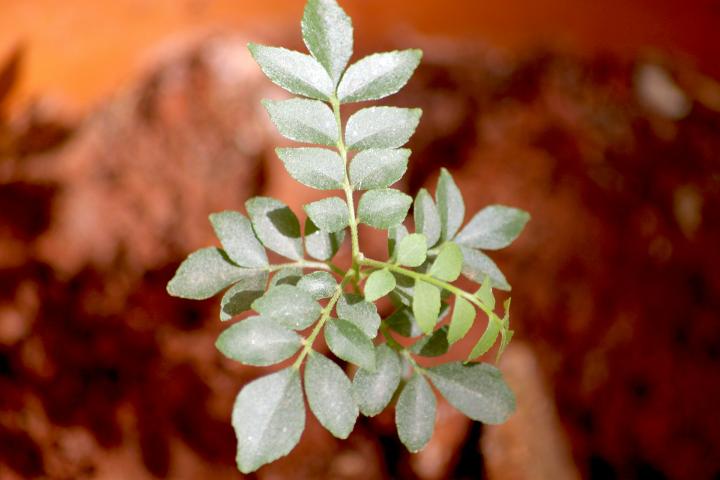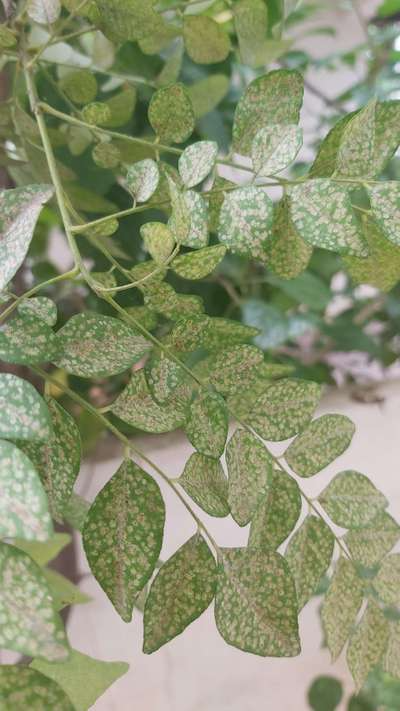Curry Leaf Plant
Curry Leaf shrubs thrive in zones 10-12 with moderate growth. They prefer well-drained soil and can tolerate full sun to partial shade. Known for their aromatic leaves, they are a staple in Indian cuisine.

Habit
Shrub
Height
2 to 4m
Growth
Moderate
Soil
Well Drained
Shade
Full Sun to Partial Shade
Moisture
High
Edible
Yes
Medicinal
Yes
Origin
India
Climatic Condition
Tropical, warm humid
Temperature (°)
20 to 35
Humidity (%)
60 to 80
Potting media
Organic-rich mix
Fertilizers
High nitrogen, compost
Watering
Regular, moderate
Plant Weight
400 to 800 g
Flowering Time
spring to early summer
Soil Ph level
6.0 to 7.5
Water Ph level
6.5 to 7.0
Soil EC
0.5 to 1.2
Yield Per Plant
4 to 6 kg per tree
NPK ratio
10:10:10
life Span
12 to 15 years
Health Benefits
Rich in antioxidants, aids digestion, controls diabetes, good for hair growth.
Suggested Grow Media or Potting Mix ?
50% loamy soil, 30% compost, 20% sand
Suggested Fertigation/Fertilizers
Fertilize every 4-6 weeks with a balanced, slow-release fertilizer.
Common Diseases and Remedies
Leaf Spot, Powdery Mildew, Scale Insects
Brown spots on leaves, white powdery substance, sticky residue
Neem oil, insecticidal soap
What Is An Curry leaf Tree?
The curry leaf plant, also known as Muraya koenigii, is a small tropical to subtropical tree or shrub that grows up to 15 feet tall. It is native to India and Sri Lanka, where it grows in moist forests.
Curry leaf plant has medium green fern-like leaves and is highly aromatic. It produces small, fragrant, creamy white flowers from spring to summer.

What Are The Different Types Of Curry leaf Plants?
There are three types of curry leaf plants (Muraya Koenigii): 'Normal', 'Dwarf' and 'Gumti'. The normal type is large and grows quickly, while the dwarf type is smaller but spreads further. Dwarf varieties are commonly grown in Indian households

What Are The Different Types Of Areca Palm Plants?
1. Location
A sunny location with at least 6 hours of direct sunlight each day.
2. Sunlight
Curry leaf plants require full sun for at least half a day. It is a tropical plant.
3. Hydration
Curry leaf plants prefer regular watering and well-drained soil. Although partially drought tolerant, too much water can kill the plant.
4. soil
A well-drained red sandy loam soil is ideal for increasing leaf yield.
5. Nutrition
Curry leaf plants do not require regular fertilization, but can be fertilized during active growth. Use nitrogen-rich fertilizers to encourage growth.

6.Issues
Pests and Diseases: Citrus mealybugs can cause shriveled leaves and premature fruit drop. Water scarcity: Water scarcity can also affect curry leaf plants. Overwatering: Drooping leaves or rotting roots can be signs of overwatering.
What are the Benefits of Curry leaf Plants ?
Hair Growth: Applying curry leaves stimulates the scalp and reveals clogged hair follicles.
Oral Health: Curry leaves have antibacterial and antimicrobial properties that help maintain oral health.
Anti-inflammatory and anti-cancer properties:
Curry leaves contain antioxidants such as flavonoids, phenols, and phytosterols.

FAQs About Growing Curry leaf
1.In which season does curry leaves grow?
Season of sowing and planting The main season of availability of curry leaf fruits is July – August.
2.What is the botanical name for curry leaf?
Murraya koenigii.
3.Which vitamin is present in curry leaves?
Curry leaves are a rich source of vitamin A, vitamin B, vitamin C, vitamin B2, calcium, and iron.
4.Can curry leaves regrow hair?
Curry leaves are rich in nutrients that can stimulate new hair growth and prevent hair loss
5.Is curry leaves a medicinal plant?
It may be considered a natural medicinal plant.

